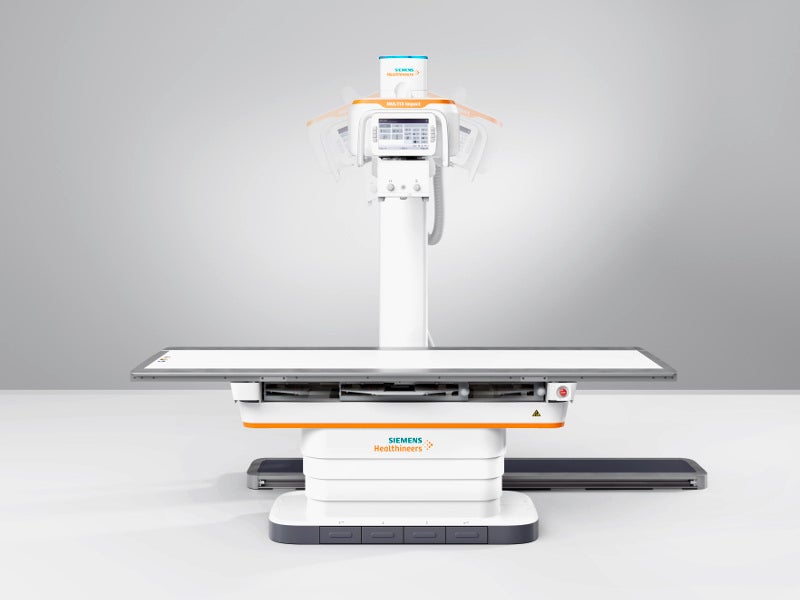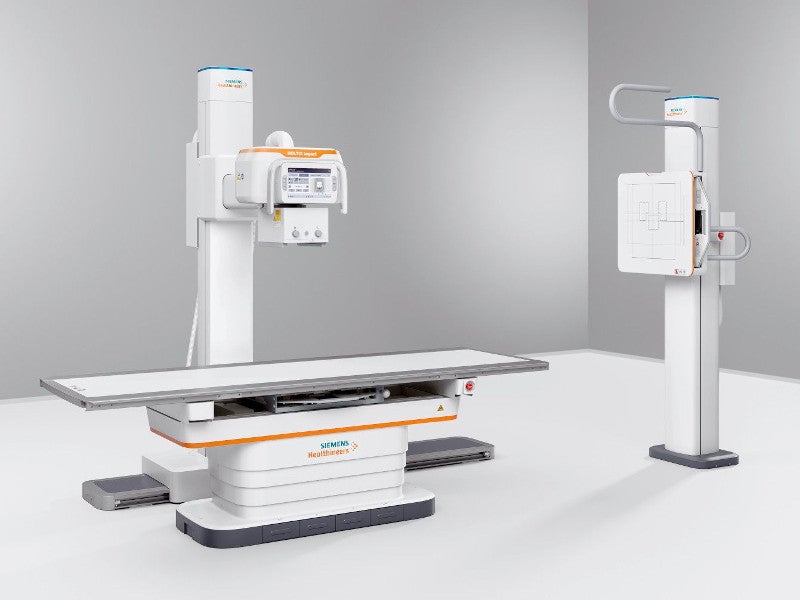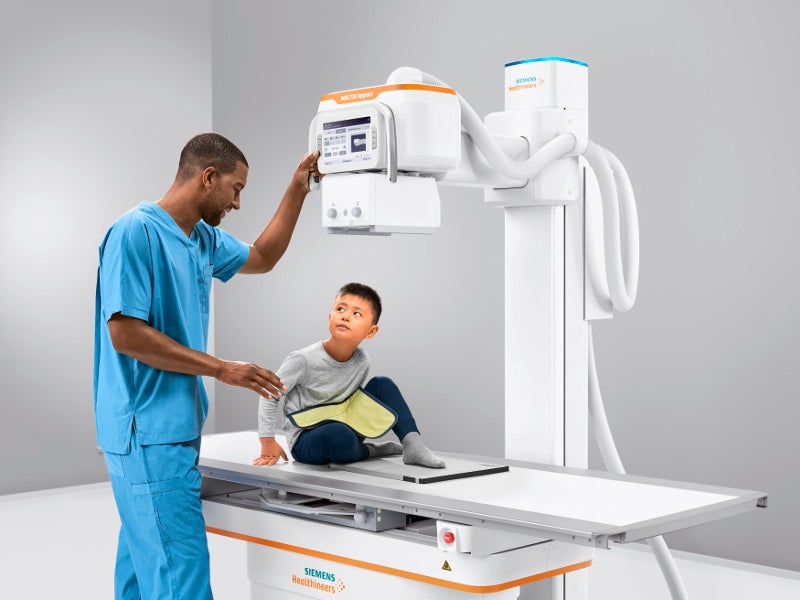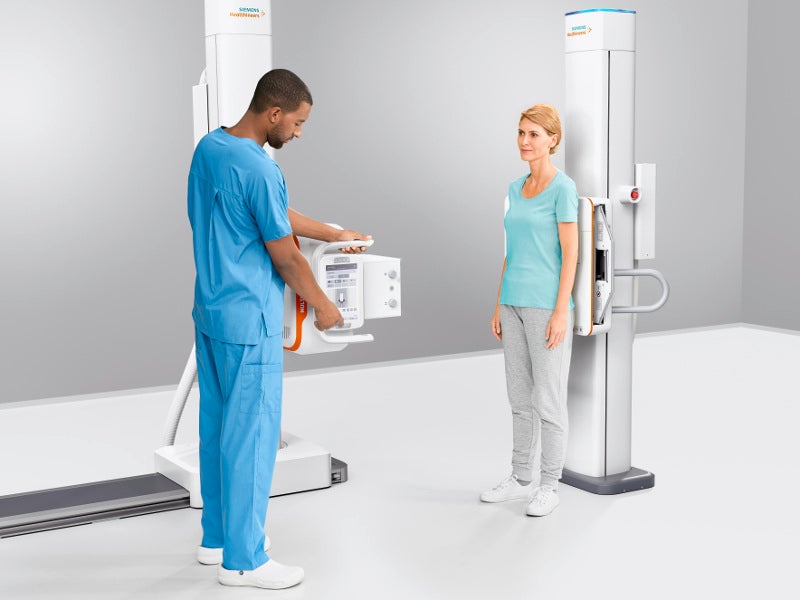Multix Impact is a state-of-the-art radiographic digital X-ray system developed by Siemens Healthineers.
The system converts X-rays into digital signals for diagnostic imaging.
The device received 510(k) certification from the US Food and Drug Administration (FDA) for clinical use in January 2019. The FDA classified the system as a stationary radiology X-ray system.
Multix Impact digital X-ray system design and features
The Multix system is a floor-mounted digital X-ray machine featuring modular X-ray components such as an X-ray tube, a Bucky wall stand, a Bucky table, an X-ray generator and a wireless detector.
The system features a flat table top and is equipped with MAX wi-D and Impact wi-D wireless detectors. These include scintillators made from caesium iodide (CsI), which offers high image quality with low patient dose.
Multix Impact digital X-ray system details
The system’s tabletop is 233cm-long and 80cm-wide. It has a fixed table height of 70cm, while the elevating table height ranges from 51.5cm to 90cm.
The maximum patient weight capacity of the table is 300kg. The distance between the table top and the detector is around 73mm.
The Bucky wall stand has a vertical travel range of 147cm and a central beam height of 33cm. The distance between the stand cover and the detector is less around 42mm.
The X-ray tube features a 10.1in touchscreen user interface with a resolution of 1,280×800 pixels. Both wireless detectors are 35cmx43cm in size.
The MAX wi-D detector is 19mm-thick and weighs 3.3kg, while the IMPACT wi-D has a thickness of 16mm and weighs 3.1kg. The X-ray generator has output ranges of 55kW, 65kW and 80kW with a frequency of around 100kHz.
Benefits of Multix Impact digital X-ray system
The Multix Impact digital X-ray system provides a cost-effective and user-friendly environment with intuitive controls and graphical programme selection.
The patient-positioning camera and pre-set programmes help less experienced technicians take low-dose images accurately. The system’s fast digital imaging cycles and quick visual adjustments help provide high-quality and reliable reports.
The positioning camera and CsI detector avoid the risk of unnecessary exposure to radiation. The X-ray tube-mounted touchscreen allows technicians to be with patients for a longer duration.
The positioning guide enables complex scans to be prepared quickly. The system is enabled with motorisation and tracking functions to reduce physically exhaustive tasks for the technicians.
Other features
The Multix Impact X-ray system operates on a single exposure operating mode and is accessorised with a wireless, Bluetooth-enabled remote control console.
The system has a standard collimator with an automatic collimation size sensing (ACSS) function. It automatically recognises the detector format and avoids unnecessary exposure to radiation.
The detector’s in-tray charging and advanced detector sharing features help accelerate workflows and reduce waiting times. It has six hours of battery capacity in standby mode and can take up to 950 images.
Marketing commentary on Siemens Healthineers
Based in Germany, Siemens Healthineers is a medical technology company focused on providing products and services in the therapeutic diagnostic imaging and advanced therapies sectors. The company has 18,000 patents and employs approximately 50,000 people worldwide.
More than 90% of the top healthcare providers partner with Siemens Healthineers, while approximately 240,000 patients an hour use the company’s systems.










